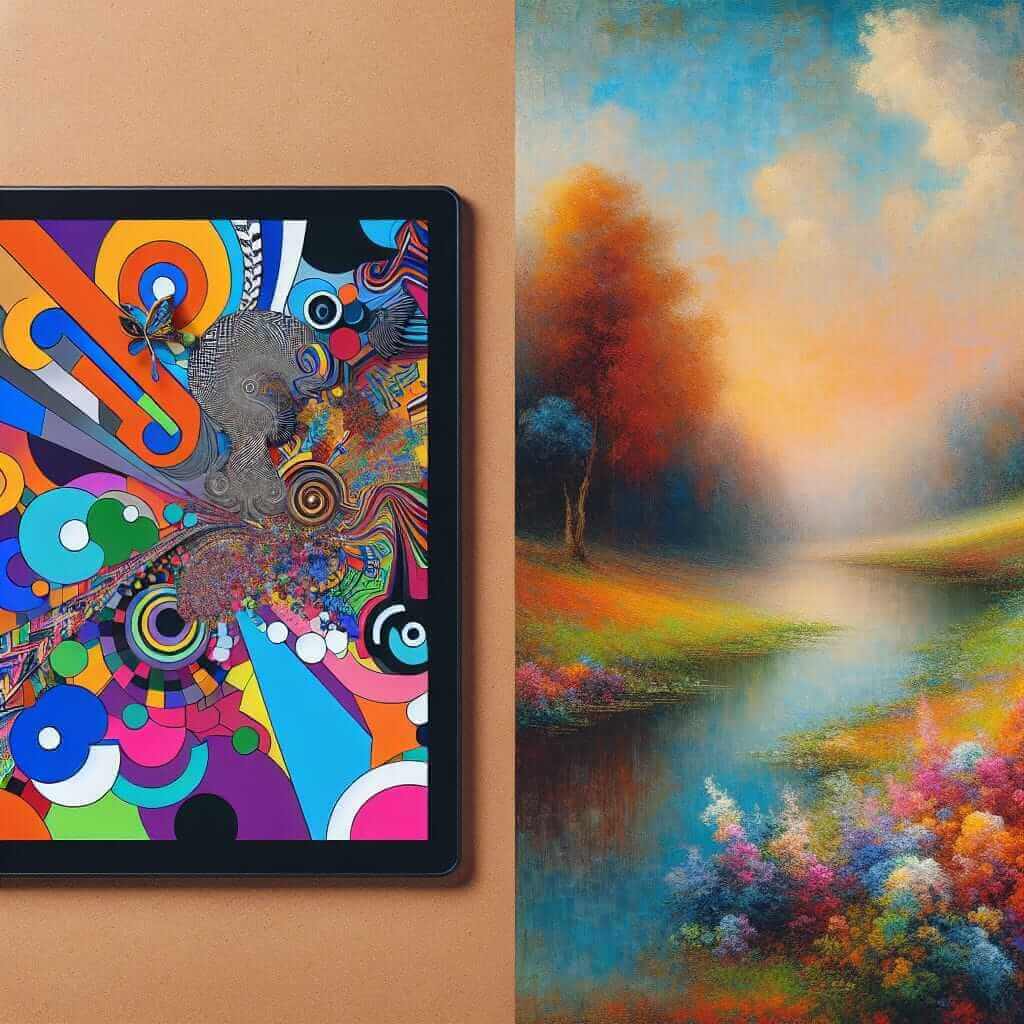The intersection of art and technology is a fascinating area of discussion, particularly within the IELTS Writing Task 2. Questions on this topic often explore the evolving relationship between traditional and digital art forms. Understanding how to effectively address these prompts will bolster your ability to achieve a Band 7 or higher.
This guide will delve into the nuances of composing a high-scoring IELTS essay on “The influence of digital art on traditional art forms”. We’ll analyze potential questions, provide a sample essay, and highlight essential vocabulary and grammatical structures.
Sample IELTS Writing Task 2 Questions
Here are some potential IELTS Writing Task 2 questions related to the influence of digital art:
- To what extent has the advent of digital technology impacted traditional art forms? Discuss both positive and negative aspects.
- Some argue that digital art diminishes the value of traditional art forms, while others believe it enhances them. Discuss both views and give your opinion.
- Digital art is becoming increasingly popular. Do the benefits of this trend outweigh the drawbacks?
Sample Essay
Let’s choose the following question for our sample essay:
To what extent has the advent of digital technology impacted traditional art forms? Discuss both positive and negative aspects.
Essay Analysis
This question requires a balanced discussion, analyzing how digital technology has both positively and negatively influenced traditional art forms. It’s crucial to address both sides of the argument while providing clear examples to support your points.
Sample Essay (Band 8 Target)
The fusion of technology and art has sparked considerable debate regarding its impact on traditional artistic practices. While digital tools offer exciting new avenues for creative expression, their influence on traditional art forms is a complex issue with both merits and drawbacks.
On the one hand, digital technology has undeniably broadened the horizons of artistic creation. Artists can now utilize software to experiment with a vast spectrum of colors, textures, and effects that might be difficult or impossible to achieve with traditional mediums. This accessibility has democratized art, empowering individuals with limited resources or physical limitations to explore their creative potential. Furthermore, digital platforms have revolutionized the way art is shared and consumed. Online galleries and social media provide artists with unprecedented global reach, fostering cross-cultural artistic dialogue and appreciation.
However, the rise of digital art has also raised concerns about the preservation and value of traditional art forms. Some argue that the ease of replication and manipulation inherent in digital art diminishes the aura of authenticity and uniqueness associated with traditional art. Moreover, the emphasis on technical skills in digital art may overshadow the craftsmanship and emotional depth often found in traditional mediums. This shift in focus could potentially lead to a decline in the appreciation and support for traditional artistic practices.
In conclusion, the advent of digital technology has had a profound impact on traditional art forms. While it has undeniably expanded creative possibilities and made art more accessible, it has also raised concerns about the preservation and value of traditional art. Ultimately, embracing the positive aspects of digital technology while ensuring the continued appreciation and support for traditional art forms will be crucial in shaping a vibrant and inclusive artistic landscape for the future.
(Word count: 279 words)
Writing Tips
- Structure: Follow a clear structure – introduction, body paragraphs (discussing both sides of the argument), and a conclusion.
- Vocabulary: Use topic-specific vocabulary (e.g., “democratized art,” “artistic dialogue,” “aura of authenticity”).
- Grammar: Demonstrate a range of grammatical structures (complex sentences, passive voice, etc.).
- Examples: Support your claims with relevant examples.
- Conciseness: Be mindful of the word limit and avoid redundancy.
Key Vocabulary
- Democratize (verb): /dɪˈmɒkrətaɪz/ – Make something accessible to everyone.
- Accessibility (noun): /əkˌsesəˈbɪləti/ – The quality of being easy to obtain or use.
- Artistic Dialogue (noun): /ɑːrˈtɪstɪk ˈdaɪəlɔːɡ/ – The exchange of ideas and influences between artists or art forms.
- Aura of Authenticity (noun): /ˈɔːrə əv ɔːˌθenˈtɪsəti/ – A feeling or quality of being genuine and original.
- Craftsmanship (noun): /ˈkræftsmənʃɪp/ – Skill in making things, especially by hand.

Conclusion
Navigating the complexities of how digital art influences traditional forms is a challenging yet rewarding exercise for IELTS Writing Task 2. Remember to approach the topic with a balanced perspective, supporting your arguments with relevant examples and using a sophisticated range of vocabulary and grammar. Consistent practice and familiarization with common IELTS themes will undoubtedly enhance your ability to articulate your thoughts effectively and achieve a desirable band score.
For further practice, consider exploring the impact of digital technology on other traditional fields, such as:
- The influence of online platforms on journalism (see how technology is changing the media landscape: [link to https://www.ielts.net/the-impact-of-online-platforms-on-journalism/]).
- The influence of technology on traditional media (explore the evolving relationship: [link to https://www.ielts.net/the-influence-of-technology-on-traditional-media/]).
By expanding your understanding of these interconnected themes, you’ll be well-equipped to tackle a wider range of IELTS Writing Task 2 questions.